Posté par Damien Bril, le 7 janvier 2014;
- Date limite : 14 février 2014
- Date et lieu du colloque : 15-17 mai 2014, Leyde
LUCAS (the Leiden University Centre for the Arts in Society) will host a three-day conference
Legal Bodies: Corpus / Persona / Communitas
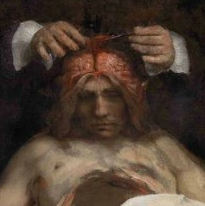 On the various ways in which literary texts and art works have represented, interrogated or challenged juridical notions of ‘personhood’. The guiding assumption behind this conference is that ‘personhood’ is not a (biologically) given, stable property of human beings that precedes their interaction with the law but rather that the notion of ‘personhood’ is assigned to selected ‘bodies’ by discursive regimes, such as law, medicine, politics, religion, and education. The focus of this conference is on how literature, art and culture might form domains in which the implications . . . → En lire plus On the various ways in which literary texts and art works have represented, interrogated or challenged juridical notions of ‘personhood’. The guiding assumption behind this conference is that ‘personhood’ is not a (biologically) given, stable property of human beings that precedes their interaction with the law but rather that the notion of ‘personhood’ is assigned to selected ‘bodies’ by discursive regimes, such as law, medicine, politics, religion, and education. The focus of this conference is on how literature, art and culture might form domains in which the implications . . . → En lire plus
Posté par Thomas Bohl, le 4 janvier 2014;
- Date limite : 20 janvier 2014
- Date et lieu de la journée d'études : 26-28 juin 2014 ; Schloss Herrenhausen, Herrenhäuser Straße 4,
30419 Hannover (Allemagne)
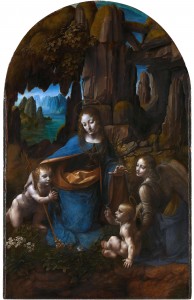 Call for Papers: Creating Nothing New: Perspectives on the Faithful Copy 1300-1900 Hanover, Schloss Herrenhausen, 26-28 June 2014 Deadline: 20 January 2014 Call for Papers: Creating Nothing New: Perspectives on the Faithful Copy 1300-1900 Hanover, Schloss Herrenhausen, 26-28 June 2014 Deadline: 20 January 2014
Up until a few years ago art history showed little interest in the phenomenon of copies: Versions” of “art works” that were closely related in terms of form and content were mostly dealt with in footnotes and could be found in the storage rooms of museums or as second-rate exhibits. However, the last years have seen a “renaissance of the copy”. Inspired by media theory and the transformation theories of social and cultural history the copy phenomenon has been pulled from the shadows and partially illuminated, using labels . . . → En lire plus
Posté par Thomas Bohl, le 4 janvier 2014;
- Date limite : 1er mars 2014
- Date de la journée d'étude : 4-6 septembre 2014 ; University of Aberdeen, King's College, Aberdeen AB24 3FX (Royaume-Uni)
 Preliminary Announcement and Call for Papers: The Fifteenth Century Conference (Open Theme) University of Aberdeen, 4-6 September 2014 Deadline: 1 March 2014 Preliminary Announcement and Call for Papers: The Fifteenth Century Conference (Open Theme) University of Aberdeen, 4-6 September 2014 Deadline: 1 March 2014
The annual gathering known as the Fifteenth Century Conference was first held in Cardiff, 1970. In 2014 the conference will meet at the University of Aberdeen. It is expected that there will be plenary sessions, parallel panel sessions of 20-30 minute papers, and opportunity to showcase collaborative projects. The theme is open and, as is customary, the chronological boundaries of c.1400 and c.1500 will be interpreted generously. Professor Christine Carpenter will offer the keynote lecture. It is hoped to offer some reduction in fee for . . . → En lire plus
Posté par Thomas Bohl, le 4 janvier 2014;
- Date limite : 16 février 2014
- Date et lieu de la journée d'étude : 21 juin 2014 ; The Courtauld Institute of Art, Somerset House, Strand, London WC2R 0RN (Grande-Bretagne)
 Call for Papers: Fifty years after Panofsky’s Tomb Sculpture: New Approaches, New Perspectives, New Material London, The Courtauld Institute of Art, 21 June 2014 Deadline: 16 February 2014 Call for Papers: Fifty years after Panofsky’s Tomb Sculpture: New Approaches, New Perspectives, New Material London, The Courtauld Institute of Art, 21 June 2014 Deadline: 16 February 2014
‘Tomb Sculpture will remain….among the basic works which determine turning points in the history of our discipline’. (Review in Art Bulletin, 1967)
The Courtauld Institute will be holding a one-day conference in 2014 to mark the 50th anniversary of the publication of Erwin Panofsky’s Tomb Sculpture: Four Lectures on its Changing Aspects from Ancient Egypt to Bernini, comprising the lectures delivered originally in the fall of 1956 at the Institute of Fine Arts, New York. Panofsky’s lectures represented a new attempt . . . → En lire plus
Posté par Matthieu Lett, le 4 janvier 2014;
- Date limite : 27 janvier 2014
- Date et lieu du colloque : 8-9 mai 2014, Faculté des Lettres, corps C - 8, rue Spiru Haret Bacău, Roumanie
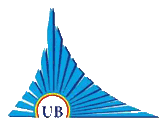 Monde des images, imagination, imaginaire ont constitué des objets d’investigation depuis l’Antiquité. À partir du XXe siècle notamment, les différents courants et méthodes de recherche proposent des approches qui étudient les multiples dimensions (ontologique, psychologique, politique, métaphysique, mythologique et religieuse, sociologique, esthétique, linguistique) de cette problématique. L’imaginaire ne définit pas le caractère fictif des représentations que l’on se fait des objets, mais il doit être conçu en tant que « réalité indépendante » (L. Boia) qui a sa propre vie, ses structures internes à partir desquelles on peut comprendre le réel même. Comment pourrait-on définir le côté à la fois réel et imaginaire de l’image ? Quelle relation y a-t-il entre simulacre, image, réel, irréel, surréel ? Quels rapports pourrait-on . . . → En lire plus Monde des images, imagination, imaginaire ont constitué des objets d’investigation depuis l’Antiquité. À partir du XXe siècle notamment, les différents courants et méthodes de recherche proposent des approches qui étudient les multiples dimensions (ontologique, psychologique, politique, métaphysique, mythologique et religieuse, sociologique, esthétique, linguistique) de cette problématique. L’imaginaire ne définit pas le caractère fictif des représentations que l’on se fait des objets, mais il doit être conçu en tant que « réalité indépendante » (L. Boia) qui a sa propre vie, ses structures internes à partir desquelles on peut comprendre le réel même. Comment pourrait-on définir le côté à la fois réel et imaginaire de l’image ? Quelle relation y a-t-il entre simulacre, image, réel, irréel, surréel ? Quels rapports pourrait-on . . . → En lire plus
Posté par Damien Bril, le 2 janvier 2014;
- Date limite : 26 février 2014
- Date et lieu du colloque : 6 juin 2014, Essex
Performing Money. The Problematic of Performance Art and the Art Market 3rd Annual Art History Graduate Conference
Keynote Speaker: Dr Andrea Phillips, Goldsmith, University of London
 Contributions are invited for the third Art History Graduate Conference to be held within the School of Philosophy and Art History (SPAH) at the University of Essex. Graduate students from MA or PhD programmes are invited to submit paper abstracts on the theme of Performing Money. The conference is also an opportunity to meet other graduate students engaged in the study of art theory and interested in performance art. Contributions are invited for the third Art History Graduate Conference to be held within the School of Philosophy and Art History (SPAH) at the University of Essex. Graduate students from MA or PhD programmes are invited to submit paper abstracts on the theme of Performing Money. The conference is also an opportunity to meet other graduate students engaged in the study of art theory and interested in performance art.
One distinct characteristic of performance art is that it originated as an aim to take . . . → En lire plus
Posté par Damien Bril, le 2 janvier 2014;
- Date limite : 10 janvier 2014
- Date et lieu du colloque : 11-12 avril 2014, Munich
Moving Body Parts: Their Transcendence of Time and Space in Pre-Modern Europe
Munich, Ludwig-Maximilians-Universität, April 11 – 12, 2014 Deadline-CFP: 10 janv. 2014
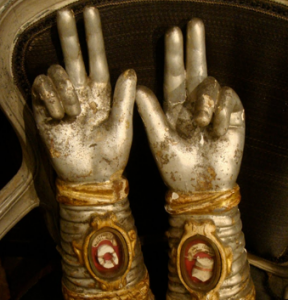 According to Jean-Claude Schmitt, “the dead have no existence other than that which the living imagine for them” – and sometimes, the living not only force them to exist in their memory but also to persist materially. By keeping the mortal remains above the earth, by dividing them, manipulating them and moving them to different places, the deceased are assigned a very active role within the world of the living. The title of this workshop includes, however, also a second “species” of migrating bodily fragments, namely body . . . → En lire plus According to Jean-Claude Schmitt, “the dead have no existence other than that which the living imagine for them” – and sometimes, the living not only force them to exist in their memory but also to persist materially. By keeping the mortal remains above the earth, by dividing them, manipulating them and moving them to different places, the deceased are assigned a very active role within the world of the living. The title of this workshop includes, however, also a second “species” of migrating bodily fragments, namely body . . . → En lire plus
Posté par Estelle Leutrat, le 2 janvier 2014;
- Date limite : 1er mars 2014
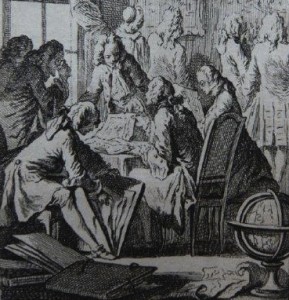
Curieux d’estampes. Collections et collectionneurs de gravures en Europe (1500-1815)
Colloque international 24-25 octobre 2014 (université Paris-Sorbonne)
De nombreux historiens de l’art ont déjà eu l’occasion de traiter du thème des collections et des collectionneurs, depuis les études pionnières d’Antoine Schnapper, de Krzysztof Pomian ou encore de Francis Haskell, jusqu’à celles, plus récentes, de Michiel Plomp ou des contributeurs au colloque international, Collectionner, collectionneurs aux XIXe et XXe siècles, dirigé par Patrick Michel, Pauline Marcilhacy et Raphaël Abrille (Paris, musée de la Chasse et de la Nature, 2011). Pourtant, force est de constater que ce sont, pour l’essentiel, . . . → En lire plus
Posté par Damien Bril, le 30 décembre 2013;
- Date limite : 2 janvier 2014
- Date et lieu du colloque : 2-5 janvier 2015, New York
129th American Historical Association Annual Meeting January 2-5, 2015, New York City Meeting Theme: History and the Other Disciplines
For more information on the annual meeting, see: http://www.historians.org/publications-and-directories/perspectives-on-history/september-2013/history-and-the-other-disciplines
Abstracts are requested for the following session:
 Living in a Material World: Material Culture and Historical Inquiry Organizer: Amanda Lanham Session Chair: Robin Fleming Living in a Material World: Material Culture and Historical Inquiry Organizer: Amanda Lanham Session Chair: Robin Fleming
This session invites proposals for papers that highlight the use of material culture within historical inquiry. History has traditionally relied upon texts as its primary source material, while material culture remained the purview of other object-based disciplines such as anthropology or art history. This perspective has gradually shifted as historians have increasingly recognized the documentary potential of “things.” Objects, through their shape, material, decoration, function, . . . → En lire plus
Posté par Thomas Bohl, le 29 décembre 2013;
- Date limite : 28 février 2014
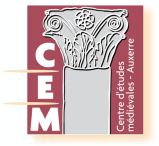 Le Bucema 18.1 publié en ligne sur la plateforme Revues.org est en préparation et le comité de rédaction vous invite à soumettre votre contribution pour ses différentes rubriques en vue de la publication du numéro Varia n° 18.1, à paraître en juin 2014. Le Bucema, Bulletin du Centre d’études médiévales d’Auxerre, est une revue scientifique à comité de lecture consacrée aux études sur le Moyen Âge. Fidèle à son principe de diffusion de la recherche en train de se faire et librement accessible, le Bucema continue à mettre l’accent sur l’interdisciplinarité -sciences humaines et sociales, sciences de la nature et mathématiques-, comme le meilleur moyen d’inventer une nouvelle médiévistique. Le Bucema 18.1 publié en ligne sur la plateforme Revues.org est en préparation et le comité de rédaction vous invite à soumettre votre contribution pour ses différentes rubriques en vue de la publication du numéro Varia n° 18.1, à paraître en juin 2014. Le Bucema, Bulletin du Centre d’études médiévales d’Auxerre, est une revue scientifique à comité de lecture consacrée aux études sur le Moyen Âge. Fidèle à son principe de diffusion de la recherche en train de se faire et librement accessible, le Bucema continue à mettre l’accent sur l’interdisciplinarité -sciences humaines et sociales, sciences de la nature et mathématiques-, comme le meilleur moyen d’inventer une nouvelle médiévistique.
Argumentaire
Le Bucema 18.1 publié en ligne sur . . . → En lire plus
Posté par Damien Bril, le 24 décembre 2013;
- Date limite : 21 avril 2014
- Date et lieu de la rencontre : octobre 2014, Milan
Bramante and Lombard Quattrocento Architecture Milano, ottobre 2014
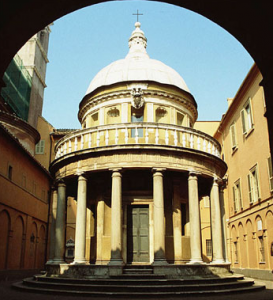 Promoted by Politecnico di Milano, Dipartimento di Architettura e Studi Urbani / Università Cattolica del Sacro Cuore di Milano, Dipartimento di Storia, Archeologia e Storia dell’Arte Promoted by Politecnico di Milano, Dipartimento di Architettura e Studi Urbani / Università Cattolica del Sacro Cuore di Milano, Dipartimento di Storia, Archeologia e Storia dell’Arte
On the occasion of the Fifth Centenary of the death of Donato Bramante (1514- 2014), the Politecnico di Milano and the Università Cattolica del Sacro Cuore propose to dedicate a day of study to new information and interpretations concerning the many unsolved problem of Bramante’s architecture. The Study-Day, to be held nearly thirty years after the conference promoted by the Università Cattolica in 1986 and in collaboration with others intending to celebrate the Centenary, aims at offering . . . → En lire plus
Posté par Damien Bril, le 24 décembre 2013;
- Date limite : 31 janvier 2014
- Date et lieu du colloque : 4-5 avril 2014, Londres
History of Art, University College London, UK, April 4 – 05, 2014 Deadline-CFP: 31 janv. 2014
BOOM! Growth, Form and Sustainable Bodies 1946-1967
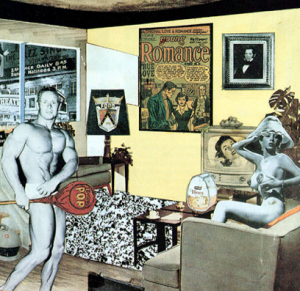 This conference is organised to coincide with the Richard Hamilton retrospective at the Tate Modern in February 2014, which will include the reconstruction of Growth and Form (ICA, 1951). Growth and Form negotiated a problematic that in the two decades after the end of WWII preoccupied different strands of artistic and architectural research across Europe. Namely, the effects of booming expansion – economic, demographic, urban, technological, material, visual – on the embodied subject within the context of a spreading capitalist pan-humanism championed abroad by . . . → En lire plus This conference is organised to coincide with the Richard Hamilton retrospective at the Tate Modern in February 2014, which will include the reconstruction of Growth and Form (ICA, 1951). Growth and Form negotiated a problematic that in the two decades after the end of WWII preoccupied different strands of artistic and architectural research across Europe. Namely, the effects of booming expansion – economic, demographic, urban, technological, material, visual – on the embodied subject within the context of a spreading capitalist pan-humanism championed abroad by . . . → En lire plus
Posté par Matthieu Lett, le 24 décembre 2013;
- Date limite : 10 avril 2014
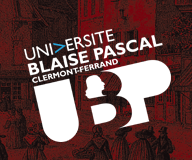
Depuis plusieurs années, le département d’histoire de l’art de Clermont-Ferrand (université Blaise Pascal) s’emploie à communiquer ses recherches autour des arts et des arts décoratifs. C’est dans cette continuité que nous souhaitons proposer cette journée d’étude afin de dynamiser et échanger les connaissances du département à plus large échelle. Cette journée d’étude s’adresse aux doctorants désireux d’intervenir sur le thème suivant : « Archives et iconographies : représentations des festivités autour des noces ». Supports archivistiques et illustrations autour de l’union seront pour nous l’occasion d’aborder les fêtes qui en résultent.
Voltaire : « Vous faites noces et vous chantez / Sur votre lyre enchanteresse », extrait de la poésie « . . . → En lire plus
Posté par Sarah Feron, le 24 décembre 2013;
- Date limite : 1er mai 2014, 1er mai 2014
- Date du colloque : 8-10 décembre 2014
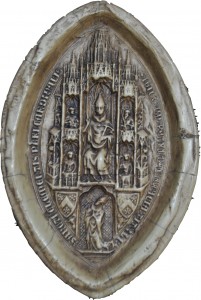 Colloque 8-10 décembre 2014 Colloque 8-10 décembre 2014
MICROARCHITECTURE ET FIGURES DU BATI : L’ECHELLE A L’EPREUVE DE LA MATIERE
Depuis une quarantaine d’années, à la suite des travaux de François Bucher, les représentations miniatures de l’architecture ont retenu l’attention des historiens. La microarchitecture monumentale et celle de la production d’orfèvrerie ont fait l’objet de travaux remarquables qui ont permis d’établir des chronologies et des typologies fiables, aujourd’hui acceptées. S’agissant de l’irruption des formes architecturales contemporaines dans ces productions miniatures, Peter Kurmann puis à sa suite d’autres chercheurs ont mis en évidence l’importance du tournant de la décennie 1240 dans le foyer francilien et, particulièrement, le rôle des façades du transept de Notre-Dame . . . → En lire plus
Posté par Damien Bril, le 19 décembre 2013;
- Date limite : 1er mars 2014
- Date et lieu de la rencontre : 30 juin-9 juillet 2014, Utrecht
Summer School: « Court Residences as Places of Exchange in Late Medieval and Early Modern Europe (III) »
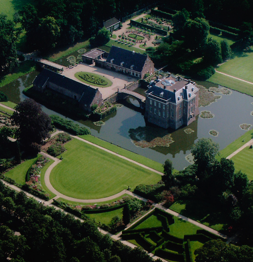 The call for participation is now open. Applications are invited by 1 March 2014. The call for participation is now open. Applications are invited by 1 March 2014.
The summer school will focus on the late medieval and early modern European court residence or ‘palace’ in an interdisciplinary perspective. Participation in the summer school is free and open to students from all nationalities. It is specifically aimed at Research Master students and PhD students in history, architectural history, art history, archaeology and related disciplines. The school offers lectures by an international and interdisciplinary group of experts, as well as field trips to various castles and residences in the Netherlands. The lectures will deal with . . . → En lire plus
Posté par Laëtitia Pierre, le 17 décembre 2013;
- Date et lieu de la rencontre : 7 juin 2014, musée des Invalides
- Date limite : 8 janvier 2014
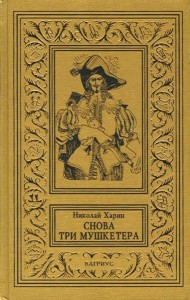 Le développement du roman historique moderne au XIXe siècle a engagé la représentation de l’histoire dans un dialogue avec les imaginaires contemporains de la culture médiatique et urbaine. En convoquant dans leurs romans certains lieux, événements, personnages empruntés au passé, les écrivains les redéfinissent suivant l’économie de la fiction au point d’en faire rapidement des stéréotypes romanesques repris d’une œuvre à l’autre. Ils leur associent un ensemble de traits attendus qui construisent les représentations de l’Histoire. Ainsi, un certain nombre de figures historiques se retrouvent-elles prises dans un va-et-vient entre reconstitution historique, stéréotypes littéraires et discours d’actualité. Le développement du roman historique moderne au XIXe siècle a engagé la représentation de l’histoire dans un dialogue avec les imaginaires contemporains de la culture médiatique et urbaine. En convoquant dans leurs romans certains lieux, événements, personnages empruntés au passé, les écrivains les redéfinissent suivant l’économie de la fiction au point d’en faire rapidement des stéréotypes romanesques repris d’une œuvre à l’autre. Ils leur associent un ensemble de traits attendus qui construisent les représentations de l’Histoire. Ainsi, un certain nombre de figures historiques se retrouvent-elles prises dans un va-et-vient entre reconstitution historique, stéréotypes littéraires et discours d’actualité.
L’un des exemples les plus frappants au XIXe siècle de ce processus de reconfiguration par . . . → En lire plus
Posté par Damien Bril, le 17 décembre 2013;
- Date limite : 6 janvier 2014
- Date et lieu du colloque : 16-17 juin 2014, Amsterdam
Amsterdam, Rijksmuseum, June 16 – 17, 2014 Deadline-CFP: 6 janv. 2014 https://www.rijksmuseum.nl/en/research-and-library/sources-on-art-technology-back-to-basics
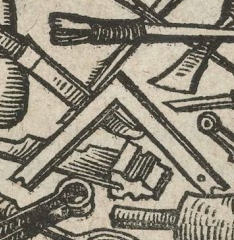 CFP: Sources of Technology CFP: Sources of Technology
After five earlier successful symposia in Amsterdam, Madrid, Glasgow, Vienna and Brussels the biennial ATSR symposium returns to Amsterdam in 2014 for discussion about the working group’s base: the art technological sources themselves and their research. The context for the 2014 symposium is the large collection of art technological sources from the Middle Ages until today in the library of the Rijksmuseum. Discussions will therefore concern: artist’s notebooks, practical treatises, studio interiors, workshop inventories, documents on the trade in artists materials, and databases for art technological sources.
For further details see the conference website: https://www.rijksmuseum.nl/en/research-and-library/sources-on-art-technology-back-to-basics
The application procedure is . . . → En lire plus
Posté par Sébastien Bontemps, le 16 décembre 2013;
 11th Annual Symposium in 19th-Century Art (New York, 9 Mar 14) Dahesh Museum of Art, NYC Deadline: Jan 12, 2014 The Eleventh Annual Graduate Student Symposium in the History of Nineteenth-Century Art, sponsored by the Association of Historians of Nineteenth-Century Art (AHNCA) Sunday, March 9, 2014 Dahesh Museum of Art in New York City Some travel funds are available and the Dahesh Museum of Art Prize of $1000, a gift from the Mervat Zahid Cultural Foundation, will be awarded for the best paper. The prize also carries with it the opportunity for publication in Nineteenth-Century Art Worldwide. Graduate students are invited to submit proposals for 20-minute papers on topics in the history of art and visual culture of the long . . . → En lire plus 11th Annual Symposium in 19th-Century Art (New York, 9 Mar 14) Dahesh Museum of Art, NYC Deadline: Jan 12, 2014 The Eleventh Annual Graduate Student Symposium in the History of Nineteenth-Century Art, sponsored by the Association of Historians of Nineteenth-Century Art (AHNCA) Sunday, March 9, 2014 Dahesh Museum of Art in New York City Some travel funds are available and the Dahesh Museum of Art Prize of $1000, a gift from the Mervat Zahid Cultural Foundation, will be awarded for the best paper. The prize also carries with it the opportunity for publication in Nineteenth-Century Art Worldwide. Graduate students are invited to submit proposals for 20-minute papers on topics in the history of art and visual culture of the long . . . → En lire plus
Posté par Matthieu Lett, le 15 décembre 2013;
- Date limite : 20 décembre 2013
- Date et lieu de la journée d'études : 16 octobre 2014, Lille et 27 novembre 2014, Rennes
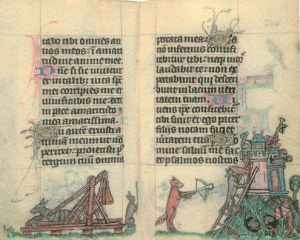 Le merveilleux médiéval est l’objet de différents essais de catégorisation de la part des chercheurs, littéraires ou historiens. Dans le cadre de ces journées d’études, le concept de merveilleux est entendu dans sa dimension profane comme un objet, un être, une situation, un phénomène visuel littéralement extraordinaire et irrationnel, divergeant des valeurs de référence du lecteur et provoquant une réaction spécifique : l’étonnement. Le rapport du merveilleux aux marges, concrètes ou abstraites, dans les textes et les manuscrits enluminés médiévaux mérite une étude spécifique. Comment le merveilleux s’inscrit-il et s’exprime-t-il dans la marge, comprise à la fois dans un sens littéral (ce qui est dans la marge) et dans un sens figuré . . . → En lire plus Le merveilleux médiéval est l’objet de différents essais de catégorisation de la part des chercheurs, littéraires ou historiens. Dans le cadre de ces journées d’études, le concept de merveilleux est entendu dans sa dimension profane comme un objet, un être, une situation, un phénomène visuel littéralement extraordinaire et irrationnel, divergeant des valeurs de référence du lecteur et provoquant une réaction spécifique : l’étonnement. Le rapport du merveilleux aux marges, concrètes ou abstraites, dans les textes et les manuscrits enluminés médiévaux mérite une étude spécifique. Comment le merveilleux s’inscrit-il et s’exprime-t-il dans la marge, comprise à la fois dans un sens littéral (ce qui est dans la marge) et dans un sens figuré . . . → En lire plus
Posté par Olivier Bonfait, le 15 décembre 2013;
- Date limite : date limite 6 janvier 2014
- Date et lieu du colloque : 7-9 février 2014, Institut français, Londres, 7-9 février 2014, Institut français, Londres
The Institut français du Royaume-Uni in London is proud to announce the launch of its annual art history festival.
VIEW will explore the multiple facets of art history through debates, talks, film screenings, an ‘art lab’ (see below) and an art book fair. Exclusive tours echoing the topics broached during the festival at the Institut will also be organised in and by London’s great museums during the weekend. From academics, curators, collectors, museum directors and art dealers to writers, film directors, artists and journalists, the greatest European personalities in the field of art history will be present to share their knowledge, debate and shed light on key issues.
ABOUT THE ART LAB The Art Lab is a dedicated space at the festival in which the work of some of the . . . → En lire plus
|
Équipe Rédacteur en chef : Olivier Bonfait.
Rédacteurs : Elliot Adam (Moyen Age) ; Nicolas Ballet (XX-XXIe siècles) ; Matthieu Fantoni (musées) ; Antonella Fenech Kroke (bourses) ; Vladimir Nestorov (Lettre mensuelle)
Administrateur web : Matthieu Lett.
ancien éditeur : Pascale Dubus
anciens rédacteurs : Gautier Anceau, Sébastien Bontemps, Damien Bril ; Sébastien Chauffour ; Ludovic Jouvet ; Aude Prigot
|
 On the various ways in which literary texts and art works have represented, interrogated or challenged juridical notions of ‘personhood’. The guiding assumption behind this conference is that ‘personhood’ is not a (biologically) given, stable property of human beings that precedes their interaction with the law but rather that the notion of ‘personhood’ is assigned to selected ‘bodies’ by discursive regimes, such as law, medicine, politics, religion, and education. The focus of this conference is on how literature, art and culture might form domains in which the implications . . . → En lire plus
On the various ways in which literary texts and art works have represented, interrogated or challenged juridical notions of ‘personhood’. The guiding assumption behind this conference is that ‘personhood’ is not a (biologically) given, stable property of human beings that precedes their interaction with the law but rather that the notion of ‘personhood’ is assigned to selected ‘bodies’ by discursive regimes, such as law, medicine, politics, religion, and education. The focus of this conference is on how literature, art and culture might form domains in which the implications . . . → En lire plus

















